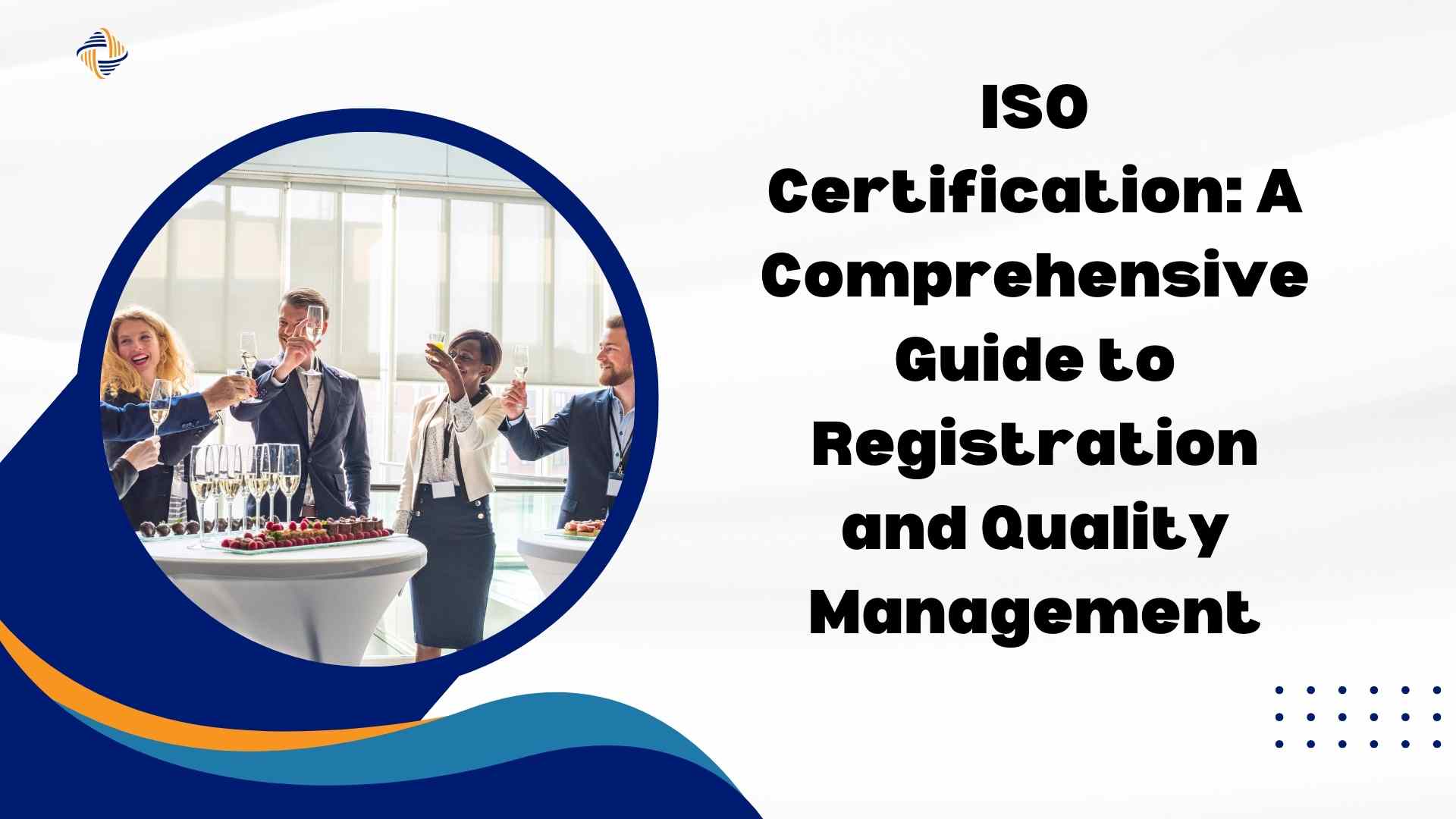Introduction
Achieving ISO Certification is a significant milestone for any organization seeking to enhance its quality management practices and gain international recognition. This detailed guide will walk you through the essentials of ISO certification, from understanding the basics to the registration process and beyond.
Understanding ISO Certification
ISO certification signifies that an organization meets the standards set by the International Organization for Standardization (ISO). These standards ensure quality, safety, efficiency, and effectiveness across various sectors and industries.
What is ISO?
ISO is an international organization that creates and issues global standards. Its aim is to ensure that products, services, and systems are safe, reliable, and of high quality. ISO certification helps businesses enhance their operational efficiency and customer satisfaction by adhering to these standards.
Key ISO Standards
-
1. ISO 9001: A Quality Management System (QMS) is a structured framework that helps organizations consistently deliver high-quality products and services. It involves defining quality policies, setting measurable objectives, documenting processes, and conducting regular audits to ensure adherence to standards. By focusing on continuous improvement, a QMS enhances customer satisfaction, streamlines operations, and boosts overall efficiency. Key components include a quality manual, procedures, records, and internal audits, all designed to promote effective quality management and drive organizational success.
-
2. ISO 14001: Environmental management involves systematically overseeing and controlling an organization’s environmental impact through policies, procedures, and practices. It focuses on reducing waste, conserving resources, and ensuring compliance with environmental regulations. By implementing strategies for sustainability and monitoring environmental performance, organizations aim to minimize their ecological footprint, enhance operational efficiency, and promote long-term environmental stewardship.
-
3. ISO 45001: Occupational health and safety (OHS) involves creating and maintaining a safe and healthy work environment to protect employees from workplace hazards and health risks. It includes implementing safety protocols, conducting risk assessments, and ensuring compliance with regulations. By prioritizing employee well-being and safety, OHS programs aim to prevent accidents, reduce workplace injuries, and foster a secure and productive work atmosphere.
-
4. ISO 27001:Information security management focuses on protecting an organization’s data and information systems from unauthorized access, breaches, and other security threats. It involves establishing policies, implementing security controls, and continuously monitoring and managing risks to safeguard sensitive information. Effective information security management ensures data integrity, confidentiality, and availability, supporting overall business continuity and trust.
Benefits of ISO Certification
-
1. Improved Quality: Standardized processes ensure uniformity in product and service quality by maintaining consistent procedures and practices across operations. This consistency helps achieve reliable outcomes and enhances overall quality.
-
2. Customer Satisfaction: Enhanced quality management practices lead to greater customer trust and satisfaction by consistently delivering high-quality products and services that meet or exceed expectations.
-
3. Operational Efficiency: Optimized processes and procedures improve efficiency and cut down on waste by making operations more streamlined and effective.
-
4. Market Advantage: ISO certification can unlock access to new markets and draw in additional clients by demonstrating a commitment to high standards and quality. This recognition helps build credibility and attract business opportunities.
-
5. Regulatory Compliance: It aids in complying with industry regulations and standards by establishing a structured approach to meet required criteria and maintain consistent practices.
The ISO Certification Process
1. Determine the Appropriate ISO Standard:
Start by identifying the ISO standard that best suits your business needs. Research the various standards to understand their requirements and benefits. Choose the one that aligns with your specific goals, industry requirements, and challenges.
2. Access the ISO Certification Portal:
Visit the official ISO certification website to initiate the process. This portal provides all the necessary information and resources to guide you through the certification journey.
3. Complete the Application Form:
Fill out the application form available on the ISO portal. Ensure that you provide accurate and comprehensive information. You will also need to pay the applicable fee as part of the application process.
4. Submit Your Application:
After completing the form and processing the payment, submit your application through the portal. Ensure that all required fields are filled out correctly to avoid delays.
5. Application Review:
Once your application is submitted, a representative from the certification body will review your payment and the details provided in your application. This step involves verifying the completeness and accuracy of your submission.
6. Confirmation of Certification:
A certification consultant will contact you to confirm the specific ISO certification you are seeking. They will provide guidance and confirm the details of your application before proceeding to the final stages.
7. Receive Your ISO Certificate:
After all verification and processing steps are completed, your ISO certificate will be issued. You will receive the certificate via email at the address you provided during the application process.
Key Considerations for ISO Certification
Scope and Relevance
Ensure that the ISO standard you choose aligns with your business objectives and industry requirements. For example, ISO 9001 is suitable for general quality management, while ISO 14001 is tailored for environmental management.
Document Management
Maintain thorough documentation of your QMS processes, procedures, and records. Proper documentation is crucial for demonstrating compliance during audits.
Employee Engagement
Engage employees at all levels in the ISO certification process. Their commitment and understanding are essential for the successful implementation and maintenance of the QMS.
Common Challenges and Solutions
Resource Constraints
Challenge: Limited resources can hinder the implementation of ISO standards.
Solution: Prioritize critical areas and consider incremental implementation. Utilize internal expertise and seek external consulting if needed.
Resistance to Change
Challenge: Employees may resist changes to existing processes.
Solution: Communicate the benefits of ISO certification clearly and involve employees in the process to gain their support and commitment.
Documentation Overload
Challenge: Managing extensive documentation can be overwhelming.
Solution: Implement a robust document management system and regularly review and update documentation to ensure relevance and accuracy.
Note: You can also Apply for ISO 9001 Certification from our website
Conclusion
ISO certification is a powerful tool for organizations aiming to enhance their quality management practices and achieve international recognition. By following this comprehensive guide, you can navigate the certification process effectively and reap the numerous benefits it offers. Embrace the journey towards ISO certification as a commitment to excellence, continuous improvement, and customer satisfaction.




